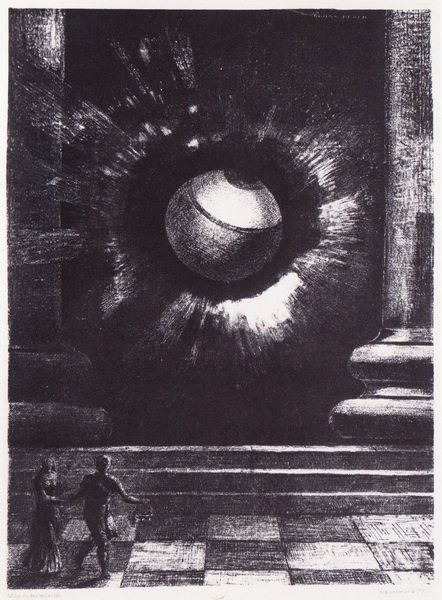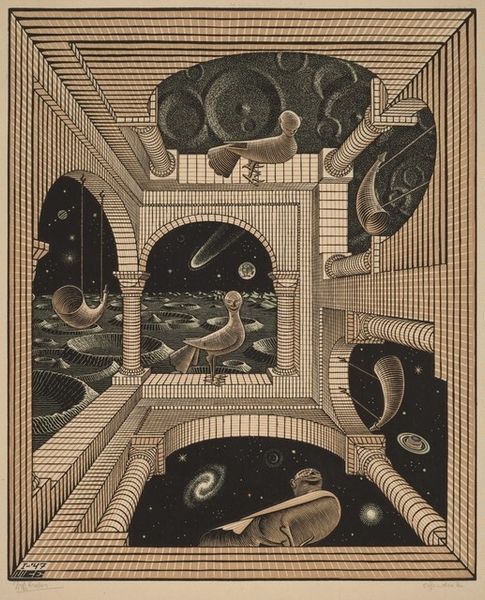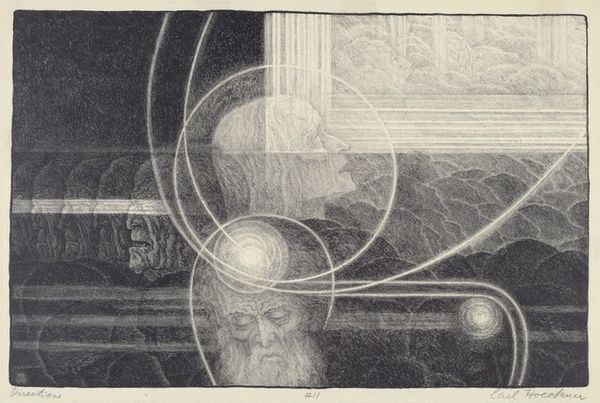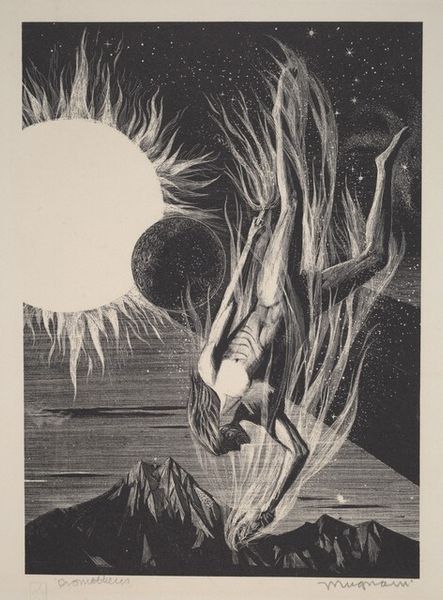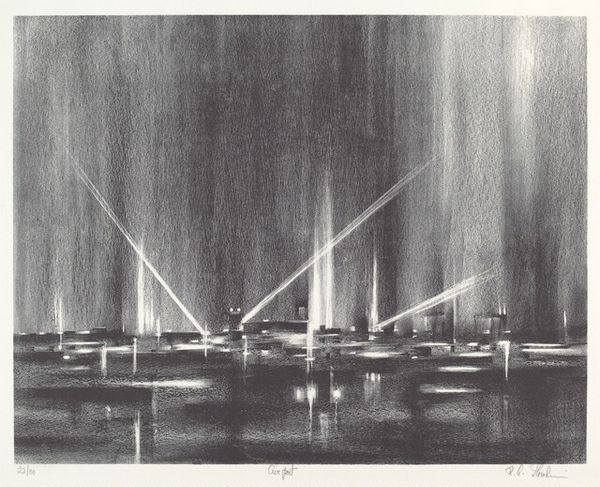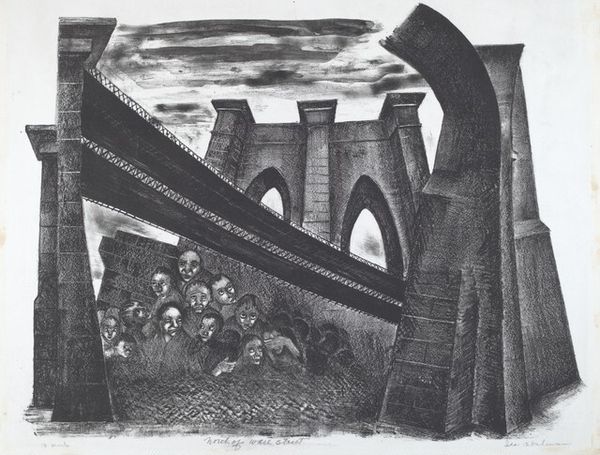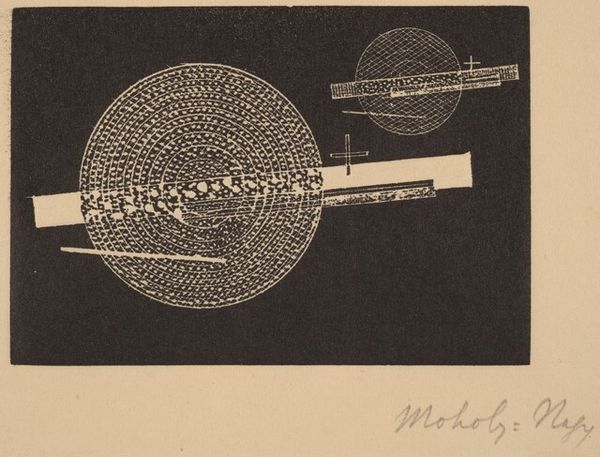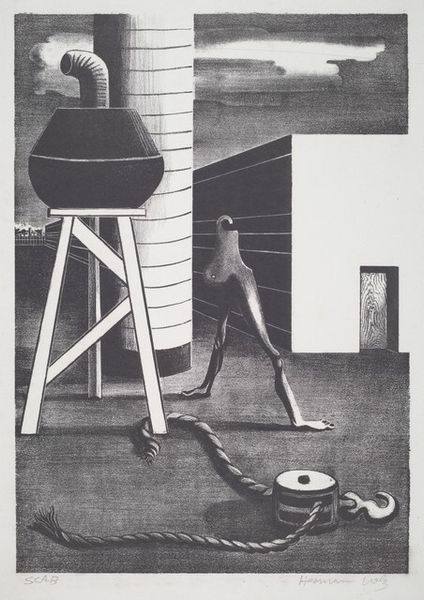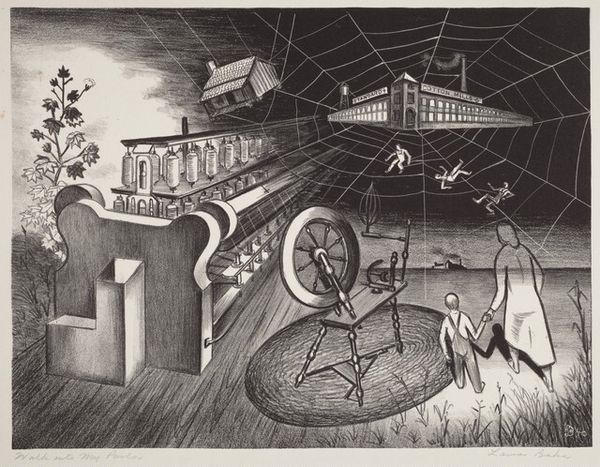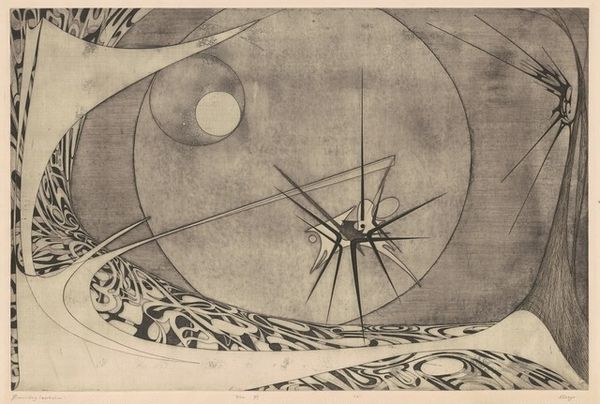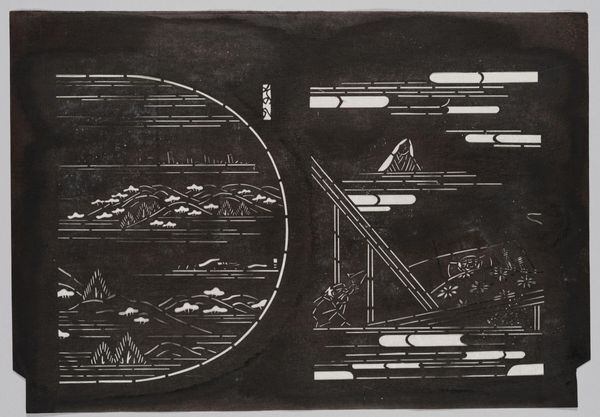
Dimensions: Image: 205 x 287 mm Sheet: 270 x 380 mm
Copyright: National Gallery of Art: CC0 1.0
Curator: This is Eugene Morley's "Untitled (Cannons and Students)," created in 1935 using pencil and graphite. The artist powerfully combines themes of cityscape and historical narrative. What are your initial thoughts? Editor: It's immediately striking – heavy with a sense of dread and suppressed tension. The contrast between the imposing cannons and the seemingly small, vulnerable figures below evokes an intense feeling of impending doom. Curator: Absolutely. The cannons themselves become monumental symbols of power and threat. They seem to loom, casting long symbolic shadows on the robed figures, perhaps students given the title. Barbed wire winds across the scene, a loaded symbol representing barriers, conflict, and restriction. The symbolic charge is significant. Editor: The placement of the figures feels deliberate. Three dark silhouettes set against the classical architecture – broken pillars, recalling images of historical warfare - suggests a critique of systems. Are they powerless victims of these looming symbols of war? Are they silent observers of the ruins of enlightenment? Curator: The three small crosses behind the broken pillars are very telling; perhaps they represent death or suffering, reinforcing that feeling of tragic fate you noted. Notice how the perspective, looking up at the cannons, emphasizes their dominance. There's almost a deification of destruction here. Editor: I read it as a statement against the burgeoning militarism of the 1930s. The juxtaposition of the students in academic gowns beneath the cannons screams of lost potential, stifled progress, and a society teetering on the brink. Is the title really "untitled," as you stated at first, or does it actually connect the canons and students in opposition? Curator: While "Untitled" is how it's usually referred, the alternate title is valuable. The geometric lines, and the arrangement of dark and light creates a symbolic drama - the darkness consuming what should be light and progress. This could also symbolize society moving from a hopeful state of progress into something more restrictive. Editor: I think it brilliantly captures a specific historical moment – that agonizing interwar period when the world knew what was coming. It stands as an important reminder. The scale feels deceptively modest for the magnitude of its message. Curator: It's a chilling portrayal that uses the symbolic language of visual imagery to explore powerful anxieties and their social consequences. Editor: Exactly. It shows how artists like Morley used symbolic composition as resistance during pivotal and tumultuous eras. I'm moved by how it encapsulates this feeling.
Comments
No comments
Be the first to comment and join the conversation on the ultimate creative platform.



